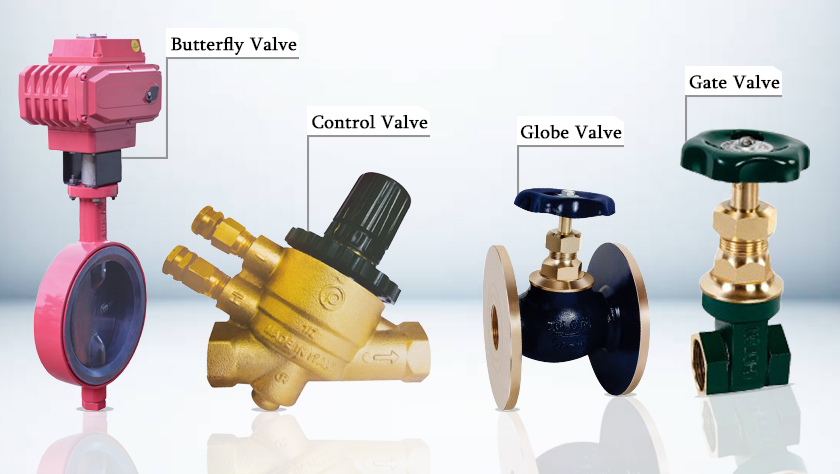Reliable Control Valves: Secret Elements for Reliable System Monitoring
Reliable Control Valves: Secret Elements for Reliable System Monitoring
Blog Article

Maximize Energy Savings and Comfort With Advanced Building Automation Controls
In the realm of modern-day architecture and center administration, the combination of innovative building automation manages stands as a crucial improvement. By using the power of automation, buildings can adjust, react, and progress in means that were once unbelievable.
Power Efficiency Perks
Energy efficiency advantages can dramatically lower power usage and operational prices in structures. Energy-efficient systems, such as sophisticated building automation controls, can maximize the use of resources like lighting, heating, and cooling, leading to reduced energy expenditures over time.
In addition, enhanced energy performance can extend the life-span of structure tools and systems. By running much more effectively, a/c systems, light, and other structure components experience less wear and tear, causing decreased upkeep and replacement costs. In addition, energy-efficient buildings often regulate greater home worths and rental rates, supplying long-term monetary benefits to owners.
In addition, energy efficiency can boost resident convenience and productivity. Effectively managed indoor atmospheres with optimum lighting and thermal conditions develop a more helpful and pleasant work area, leading to improved worker contentment and performance. In general, the energy effectiveness advantages linked with advanced building automation controls are multifaceted, including expense financial savings, ecological stewardship, and occupant well-being.
Improved Convenience Control
Enhancing comfort control in building settings needs a sophisticated combination of advanced automation systems for ideal resident health. By using innovative structure automation controls, facilities can customize the indoor setting to satisfy the specific demands and preferences of owners. control valves.
By incorporating these advanced controls, buildings can not only improve convenience yet also boost power performance by optimizing system operations based on actual occupancy and usage patterns. Ultimately, prioritizing resident comfort with innovative automation systems leads to a more satisfying and much healthier interior atmosphere.
Operational Effectiveness Improvements

Additionally, the implementation of real-time monitoring and analytics devices allows structure operators to recognize power inefficiencies and operational anomalies promptly. By continually checking energy usage patterns and system efficiency metrics, changes can be made in real-time to optimize power consumption and make certain peak operational performance. control valves. Furthermore, including demand response approaches into structure automation controls can better enhance functional efficiency by dynamically readjusting energy usage based upon grid conditions and prices signals
Indoor Environment Optimization
Efficient indoor environment optimization is a fundamental element of structure automation controls, guaranteeing passengers' convenience and well-being while optimizing energy savings. By making use of advanced sensors and controls, developing automation systems can continually keep track of and change temperature, humidity levels, air quality, and ventilation to produce an ideal interior environment. Maintaining constant and comfortable conditions not only enhances occupant complete satisfaction but also boosts productivity and overall well-being.
Indoor environment optimization additionally plays an essential role in power efficiency. By fine-tuning air conditioning, home heating, and air flow systems based on real-time information and tenancy patterns, developing automation controls can substantially decrease energy intake - control valves. Implementing techniques such as demand-controlled ventilation and thermal zoning can assist reduce energy waste while ensuring that each area of the building receives the necessary conditioning.

Lasting Environment Development
Structure automation regulates not only maximize indoor environment problems for energy performance and passenger comfort however likewise lay the foundation for developing a sustainable setting through critical monitoring of resources and systems. By incorporating sophisticated structure automation modern technologies, such as sensing units, actuators, and smart software, facilities can readjust and keep track of power usage in real-time to decrease waste and decrease their carbon footprint. These systems make it possible for predictive upkeep, determining prospective concerns before they intensify and maximizing equipment efficiency to boost Source longevity and effectiveness.
Additionally, lasting atmosphere development expands past power management to incorporate water conservation, waste reduction, and indoor air high quality enhancement. Structure automation controls can regulate water usage, find leakages, and ensure proper garbage disposal practices, contributing to general sustainability efforts. Furthermore, by controlling and keeping track of ventilation and filtering systems, these modern technologies enhance resident health and productivity while decreasing power intake connected with HVAC operations.
Final Thought
Finally, advanced structure automation regulates offer substantial benefits in terms of power financial savings, convenience control, operational efficiency, interior climate optimization, and producing a sustainable setting. By applying these controls, structures can achieve optimal efficiency while minimizing energy intake and boosting resident convenience. It is noticeable that using advanced automation modern technology is critical in improving building efficiency and producing a much more sustainable future.
Power performance benefits can dramatically minimize energy usage and operational expenses in buildings. Generally, the energy i loved this effectiveness advantages linked with find more information sophisticated structure automation controls are complex, including price savings, ecological stewardship, and resident health.
Additionally, integrating need feedback strategies into building automation controls can additionally boost functional efficiency by dynamically changing energy use based on grid problems and pricing signals.
Building automation manages not just optimize indoor environment problems for energy effectiveness and occupant comfort however likewise lay the structure for developing a lasting setting via tactical administration of systems and sources.In verdict, progressed building automation regulates deal substantial advantages in terms of power financial savings, convenience control, operational efficiency, interior environment optimization, and developing a sustainable setting.
Report this page